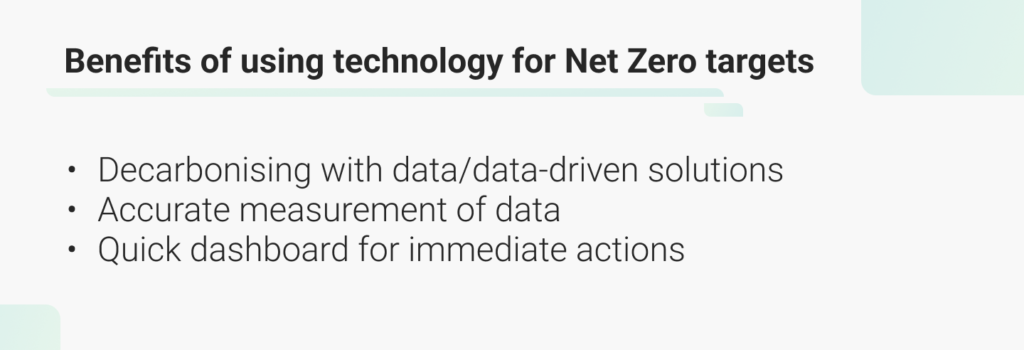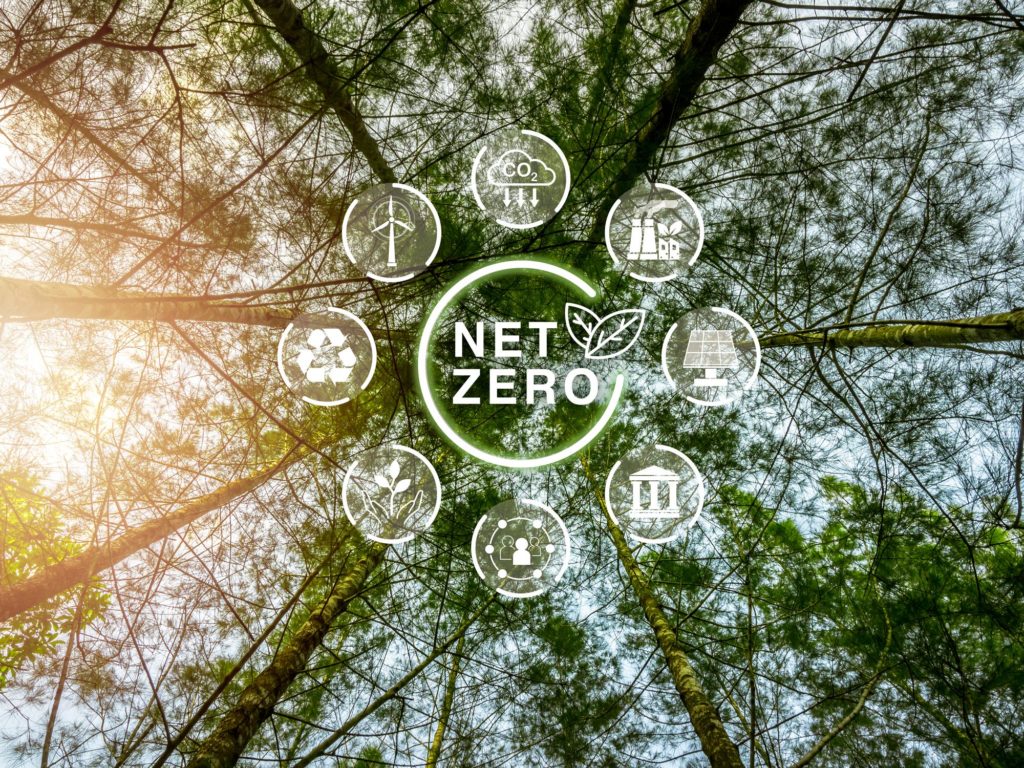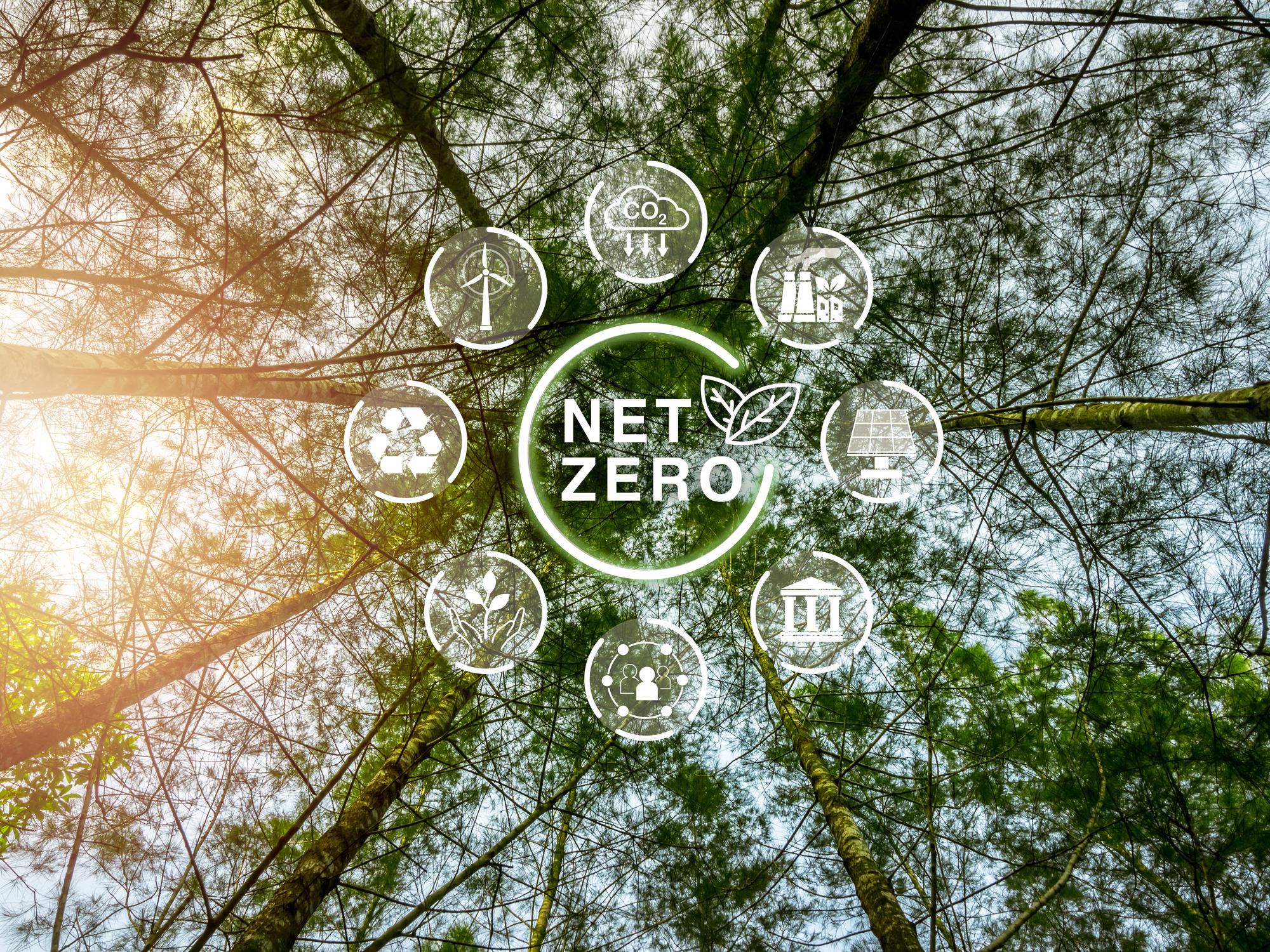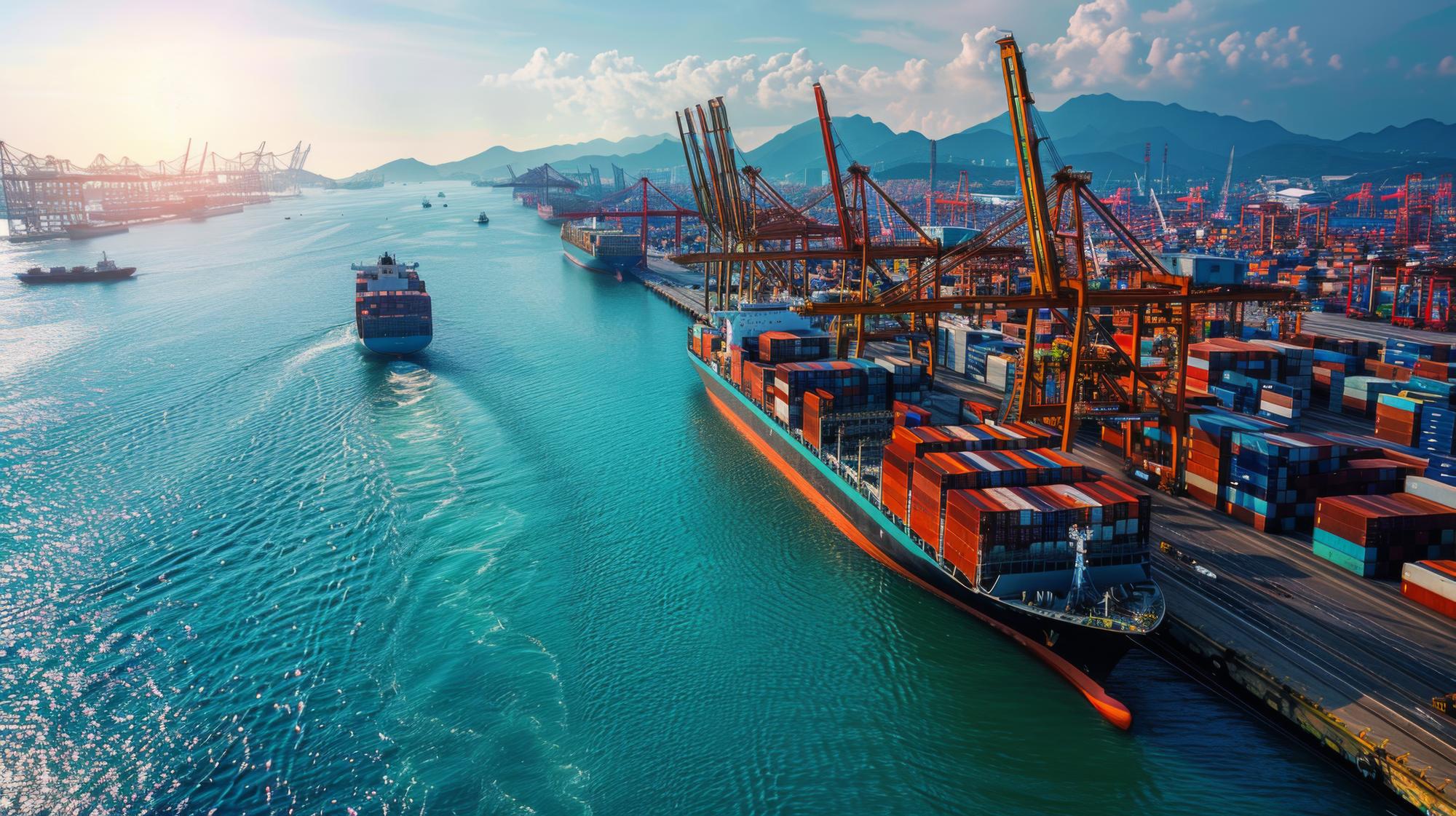Climate change has started to impact every aspect of life and human society. International global trade patterns are changing, business dynamics are undergoing transformation, and economic impacts are becoming visible in organisations across the globe. After the UN report revealed that the earth is on track for a global temperature rise of 3.1°C by the end of this century, organisations have been paying an increasing amount of attention to achieving Net Zero targets.
To keep the temperature rise below 1.5°C, nations across the world must focus on setting new targets and policies, and implement effective measures to achieve Net Zero. Our current climate change policies and measures to reduce greenhouse gas emissions are not working. We certainly need new measures, targets and policies to decarbonise the globe.
Corporates must focus on minimising their climate risk and making their businesses future-proof. Companies can reduce operational costs, develop climate-resilient systems and unlock new market opportunities. It is essential for businesses to prioritise Net Zero goals as the economic landscape becomes increasingly climate-conscious. Stakeholders, including investors, customers, and regulators, are demonstrating heightened concern regarding climate change. For instance, investors are now requesting comprehensive climate risk data, encompassing factors such as extreme weather events, Net Zero commitments, and a strategic roadmap for transitioning to a low-carbon economy.
What is Net Zero?
Net Zero means the removal of an equivalent amount of carbon dioxide from the atmosphere that was released into the environment due to human activity. It refers to the balance between the greenhouse gas (GHG) produced and removed from the atmosphere.

The science shows clearly that in order to avert the worst impacts of climate change and preserve a livable planet, global temperature increases need to be limited to 1.5°C above pre-industrial levels. Currently, the Earth is already about 1.2°C warmer than it was in the late 1800s, and emissions continue to rise. To keep global warming to no more than 1.5°C – as called for in the Paris Agreement – emissions need to be reduced by 45% by 2030 and reach Net Zero by 2050.
Why is Net Zero important?
The scientific evidence proves that Net Zero targets are critical to achieve in order to avoid the worst impacts of climate change and ensure the planet is livable. There could be loss of lives, livelihoods, jobs, economic hardships, trade changes and large-scale migration induced by the climate change crisis. Climate change is affecting every aspect of human life, including the economy, air, water, businesses and international trade across the globe.
A look at why Net Zero is important for corporates:
- Economic impact
- Investors looking for climate data
- Overcoming trade barriers
- Business efficiency
Economic impact
Climate change is casting unprecedented impacts on the business operations and revenue models of corporations across the globe. India is not untouched by the economic repercussions on both small and large businesses. For instance, the Reserve Bank of India has estimated climate change could impact up to 4.5 per cent of India’s GDP by 2030 due to lost labour hours from extreme heat and humidity.
Moreover, rising temperature could cost the Indian economy and GDP by 2.8 per cent. Hence, it is extremely important to limit and reduce global warming. Most of the climate-induced disasters and catastrophes could be avoided if the world works to achieve Net Zero targets on time. For instance, emissions must be cut down by 45 per cent by 2030 and reach Net Zero by 2050 under the Paris Agreement.
Investors looking for climate data
Investors are also getting drawn mostly to companies that are climate-conscious. Investors’ trust depends on how and what other organisation thinks about the environment and climate change. Multiple publicly available reports suggest that 70 per cent to 85 per cent of investors consider climate change, environmental impact and NetZero targets before pumping money into any company.
Investors have increasingly started to put greater importance on having access to climate risk data from the companies. A lot of investors, shareholders and financial institutions are asking for the ESG, TCFD, IFRS 1, IFRS 2 and carbon accounting data to be well aware of business risks due to climate change. If you want to climate-proof your business from the short-term and long-term climate vagaries, you must have the data ready and must become Net Zero. For instance, investors will never want to lose money due to losses incurred by any company because of extreme heat, drought and other weather-related risks. Moreover, physical climate risk and transition climate risk can only be understood by preparing a detailed Net Zero roadmap and achieving those targets.
Overcoming trade barriers
Becoming Net Zero also removes many trade barriers, unlocks fresh business opportunities and reduces operational costs. Accurate monitoring of energy consumption, water usage and carbon emissions helps in the identification of hotspots within the organisation. This can help enhance business performance and also benefit economically. For instance, once a company knows the emission hotspots, it can work to resolve them by stopping unnecessary usage or converting to other economically viable options. This saves cost as well.
Changing consumer demands is another challenge that can be converted into an opportunity for businesses. An increasing number of consumers are becoming climate-conscious and choosing climate-friendly products, services, and companies. Businesses that demonstrate leadership on climate and sustainability matters can quickly develop and establish long-lasting relationships with their customers and consumers. Subsequently, this improves brand image in the market.
Business efficiency
The climate policy and regulatory landscape is rapidly changing across the world. Governments are also introducing multiple carbon pricing mechanisms and emissions trading schemes to push the companies towards achieving Net Zero targets. Not making sustainability efforts and not participating in climate action also exposes the company to financial vulnerabilities and penalties.
Amid all of this, the company’s supply chain gets disrupted due to the climate crisis and unpredictable weather conditions and factors related to them. For instance, a company could face a labour shortage due to extreme heatwaves in the long run if it ignores the weather conditions. However, with accurate and timely Net Zero goals, the supply chain management can be prepared well to face future climate challenges and increase business efficiency. A well-crafted Net Zero strategy helps mitigate all these risks and build a more resilient operation that can adapt to the demands of a low-carbon economy.
Major challenges for Net Zero
India faces many challenges that must be addressed to achieve the Net Zero targets by 2070. Here is a look at some major challenges:
- Lack of digital infrastructure: India continues to face a lack of digital infrastructure that is required to ensure green transition and achievement of NetZero targets.
- Data collection: There continues to be challenges related to accurate data collection for organisations under different sectors and industries. This is because adapting to a climate-resilient economy depends on the accuracy level of emissions data.
- Heavy reliance on coal: Most industries still depend primarily on coal for their energy consumption and production processes. Hence, shifting their production methods due to shifts to the use of renewable energy sources acts as a big setback when it comes to reaching NetZero goals.
- Use of carbon-intensive production methods: Companies in India are still dependent on the usage of carbon-intensive methods of manufacturing products. For instance, India is the second-largest exporter of iron and steel in the world and it still uses conventional methods of production, including the “Blast Furnace – Basic Oxygen Furnace (BF-BOF)” process. This method is considered the dominant production route in the industry, contributing to the high carbon footprint of steel production.
- Limited use of cleaner technology for emissions monitoring: Most companies across the world have been depending on Excel Sheet and manual methods for their emissions monitoring and energy consumption tracking. Moreover, the technology used to produce carbon-intensive products also releases a lot of emissions and consumes high energy. The systemic shift from the old technologies to the latest climate-friendly technology for production methods and monitoring emissions to achieve the Net Zero target is essential.
Where does the world stand on Net Zero?
Most countries have Net Zero targets. By June 2024, 107 countries, responsible for 82 per cent of global greenhouse gas emissions, had Net Zero plans in their national climate action plans, as per the UN. Moreover, the data also suggests the United States of America, the European Union, the Russian Federation, China, India, and Brazil accounted for 63 per cent of the global emissions in 2023.
There is a massive global emissions divide between the developed countries and the developed world. For instance, around 45 least-developed countries accounted for only 3 per cent of global emissions.
The G20 countries and the world’s largest economies are responsible for around 77 per cent of global greenhouse gas emissions. The list of these countries includes Argentina, Australia, Brazil, Canada, China, France, Germany, India, Indonesia, Italy, Japan, the Republic of Korea, Mexico, Russia, Saudi Arabia, South Africa, Turkey, the United Kingdom, the United States, and the European Union.
India’s Net Zero journey
As the world continues to get climate-conscious everyday, attaining the domestic NetZero targets for different companies become the primary goal of all climate action initiatives. India is the fourth largest emitter of greenhouse gases in the world after China, the US and the European Union. It has already been taking many decisions and measures to achieve its NetZero goals. Indian Prime Minister Narendra Modi pledged to achieve NetZero by 2070.
Moreover, India’s updated Nationally Determined Contribution Under the Paris Agreement says it would reduce the Emissions Intensity of its GDP by 45 per cent by 2030 compared to 2005 levels. Additionally, the country would focus on achieving about 50 per cent cumulative electricity from non-fossil fuel-based energy resources. In order to achieve these ambitious targets by 2050, India needs an investment of more than $15 billion.
Decarbonisation steps and strategies to achieve your Net Zero
Decarbonisation and Net Zero are interdependent concepts. Decarbonisation refers to the process of reducing or eliminating carbon dioxide (CO₂) and other GHG emissions from various sectors, including energy, transportation, industry, and agriculture. This is achieved through measures such as transitioning to renewable energy sources, improving energy efficiency, and adopting low-carbon technologies.
Net Zero is the end goal to be achieved through these efforts and strategies. In essence, decarbonisation is the pathway to achieving Net Zero by progressively cutting emissions across all sectors until only unavoidable emissions remain, which can then be offset to achieve a neutral carbon balance.
Four strategies to achieve Net Zero
Organisations need to focus on developing effective strategies followed by practical steps to achieve the Net Zero target.
- Monitoring carbon footprint
- Use of renewable energy
- Energy efficiency
- SBTi
Monitoring carbon footprint: The first strategy is to ensure timely and accurate monitoring and reducing carbon emissions. This also means proper waste management and pushing for sustainable practices at the organisational level.
Use of renewable energy: Another strategy to attain Net Zero goals is to transition from fossil fuels to renewable energy sources like solar, wind, and hydroelectric power. Shifting to renewable energy also means reduced dependence on means and methods that result in carbon emissions.
Energy efficiency enhancement: Companies should initiate adopting and adapting to cleaner technologies and methods of doing business. This will ensure energy efficiency for organisations. But energy efficiency enhancement will depend on upgrading infrastructure, optimising manufacturing processes and improving the building outlook to decrease the energy consumption.
Science-Based Targets Initiative: Science-based target initiatives play a pivotal role in reducing an organisation’s carbon emissions and achieving Net Zero targets. This ensures cutting down emissions as per the latest climate science.
Role of technology in achieving Net Zero targets
There are different ways to achieve Net Zero targets. But the role of the right and effective technology is unmatchable, as it accelerates the decarbonisation journey at least 50 times more than other conventional methods. Internet of Things (IoT) devices and sustainability management software can monitor, track, set targets, and reduce emissions in real-time. It also gives you access to a live dashboard of all data points tracking, which helps in the quick identification of hotspots and making quick decisions.

Some of the primary challenges to attaining Net Zero goals include the lack of right technology, increased pricing for green solutions and lack of global policy alignment. The Sustainability Cloud provides end-to-end Net Zero climate action. It’s an all-in-one software that accelerates Net Zero journey for carbon emissions, water accounting, energy tracking and ultimate reductions. The Net Zero tool automates data collection, ensures seamless compliance, sets and achieves SBTi targets and prepares a practical roadmap. All global standards are integrated into the tool for accurate carbon accounting and understanding emissions patterns and hotspots in one place.




